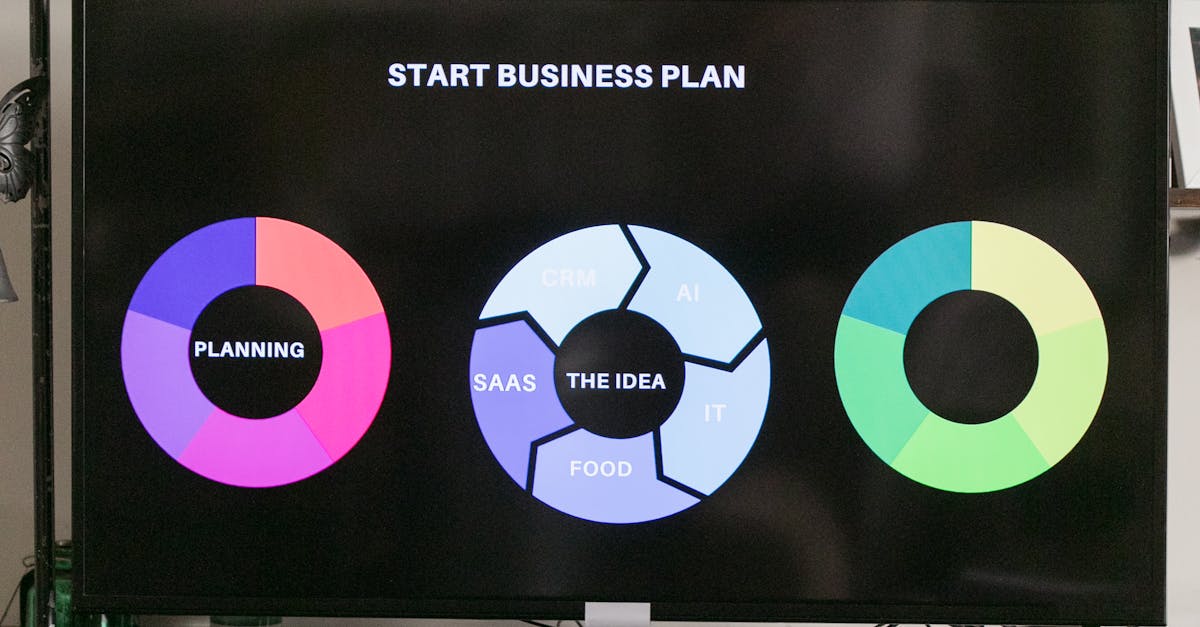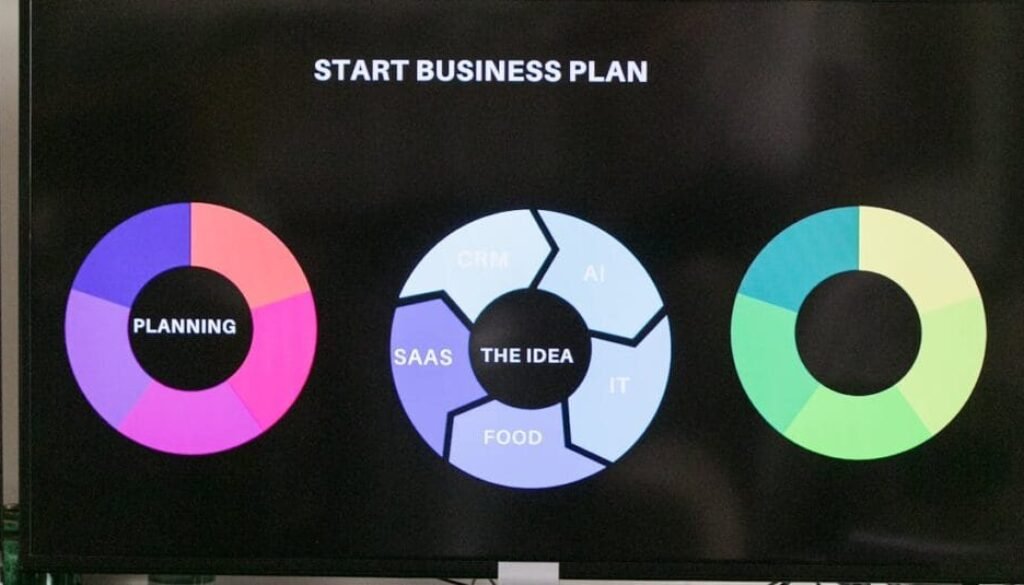A Comprehensive Guide to Launching Your Business in Just 15 Steps
A Comprehensive Guide to Launching Your Business in Just 15 Steps
Embarking on the journey of starting a business is an exhilarating experience, filled with endless possibilities and a chance to turn your dreams into reality. As I navigate through this comprehensive guide, I am eager to share with you the essential steps to launching your business successfully. Whether you’re a budding entrepreneur or a seasoned professional, these 15 steps are crafted to set you on the path to success.
Understanding the nuances of entrepreneurship is crucial. From refining your business idea to executing effective marketing strategies, each step demands meticulous planning and execution. Market research forms the backbone of any business strategy, offering insights that drive decisions and shape your approach. When I explore market trends and consumer behaviors, I find invaluable data that helps sharpen my business model.
The business registration process can often appear daunting, but I assure you that with a structured plan, it becomes manageable. Legal considerations for businesses, such as choosing the right business structure and understanding tax obligations, are pivotal in laying a strong foundation. Moreover, branding your business effectively ensures that your brand resonates with your target audience, establishing a distinct identity in a competitive market.
Financial planning for startups is another cornerstone of business success. From securing capital to managing finances, understanding the financial landscape empowers me to make informed decisions. Networking for entrepreneurs and leveraging business resources and tools further enhances growth opportunities, creating a robust support system that fuels progress.
As we delve deeper into this guide, I will also highlight customer acquisition strategies and time management for startups, ensuring that you are equipped with the knowledge and skills needed to thrive. With dedication, strategic planning, and an unwavering entrepreneurial mindset, launching your business in today’s dynamic environment becomes not just achievable, but rewarding.

Key Takeaways
- Launching a business requires a well-structured plan to define goals and ensure success. Follow a step-by-step guide to streamline the process.
- Researching the market and understanding your competitors is crucial to positioning your business effectively and identifying your target audience.
- Choosing an appropriate business structure and registering your business name legally are foundational steps that provide legal protection and credibility.
- Securing funding through various channels, such as crowdfunding or small business loans, is essential for covering startup costs and sustaining operations.
- Establishing a separate business bank account helps manage finances efficiently and simplifies accounting and tax processes.
- Building a strong online presence with a user-friendly website optimized for SEO can significantly enhance visibility and attract potential customers.
- Obtaining necessary permits, licenses, and insurance ensures compliance with legal requirements and protects your business from unforeseen risks.
Setting the Stage for Your Business Launch
Understanding the importance of a well-structured launch plan is critical when preparing to unveil your business. A comprehensive plan serves as the roadmap guiding each stage of the launch, ensuring nothing crucial is overlooked. It also helps in aligning team efforts, managing resources effectively, and minimizing risks associated with unforeseen challenges.
Overview of the 15 Steps to Launch Your Business
Launching a business involves a series of strategic steps that collectively set the foundation for success. Key steps include conducting market research, developing a business plan, securing funding, designing brand elements, and leveraging social media for promotion. Each step plays a pivotal role in building momentum and establishing a strong market presence.
Generating and Refining Your Business Concept
As I embark on the journey of launching a business, identifying market needs and gaps is crucial. By thoroughly understanding what potential customers desire, I can tailor my offerings to meet those demands effectively. This involves analyzing current trends and pinpointing areas where existing solutions fall short.
Identifying Market Needs and Gaps
The first step is to observe and listen to the target audience. What are their pain points? What products or services are missing in the market? By answering these questions, I can create a business concept that fills these gaps, ensuring that my venture stands out.
Validating Your Business Idea with Market Research
Once I have a concept, validating it through market research is essential. This means conducting surveys, gathering feedback, and analyzing competitors. Comprehensive research not only confirms the viability of the idea but also provides insights into potential challenges and opportunities that may arise.
Gathering Data to Inform Your Business Strategy
When launching a business, it’s crucial to gather data that effectively informs your strategy. Understanding the competitive landscape is key. I start by analyzing competitors, examining their strengths and weaknesses, and identifying market gaps. This analysis helps me position my offerings uniquely.
Equally important is understanding customer demographics and preferences. I utilize surveys and social media analytics to gather insights into customer behavior, ensuring I tailor my products and services to meet their needs. By leveraging data analytics tools, I can predict trends and adapt my strategies accordingly, which is vital in today’s ever-evolving market.
My approach also involves staying updated on industry trends through reliable sources, ensuring my business strategy remains relevant and competitive.

Crafting a Roadmap for Your Business
As I embark on the journey of launching my business, crafting a comprehensive roadmap is crucial. This blueprint guides me through the complexities of business management, ensuring I stay focused on achieving success. A well-crafted roadmap consists of various components, including a detailed business plan and clear goals.
Components of a Business Plan
A business plan serves as the foundation of my roadmap. It includes an executive summary, market analysis, organizational structure, product line, marketing strategy, and financial projections. Each section provides clarity and direction, helping me understand the market landscape and identify growth opportunities.
Setting Short-term and Long-term Goals
Setting both short-term and long-term goals is integral to my business roadmap. Short-term goals might include increasing brand awareness or acquiring initial customers, while long-term goals focus on expanding market reach or launching new products. Breaking these goals into actionable steps helps maintain momentum and measure progress effectively.
Deciding on the Legal Framework
Choosing the right legal framework is crucial for your business’s success. Each structure has its pros and cons that can impact your operations, taxes, and liabilities.
Pros and Cons of Different Business Structures
- Sole Proprietorship: Easy to establish with minimal paperwork, but you bear personal liability for debts.
- Partnership: Shared responsibility and resources, yet partners are personally liable for business obligations.
- Corporation: Limited liability protection, but involves complex regulations and higher costs.
- Limited Liability Company (LLC): Offers flexibility and limited liability, though might require more administrative duties.
Legal Requirements and Considerations
Understanding legal requirements is essential. For example, a corporation must adhere to strict reporting standards, while an LLC provides operational flexibility. Consider consulting a legal expert to navigate these complexities efficiently.
Making Your Business Official
When I decided to make my business official, I realized the importance of choosing the perfect business name. It was crucial for me to pick a name that reflected my brand’s identity and was memorable for my customers. I ensured it was unique by researching existing businesses and checking domain availability online.
Registering with Local and National Authorities
Next, I moved on to registering my business with both local and national authorities. This step was essential for operating legally and protecting my brand. I began by checking the specific requirements for my state, as each state in the U.S. has different regulations. For instance, in some states, I needed to register my business structure, such as an LLC or a corporation, with the Secretary of State. Additionally, I applied for an Employer Identification Number (EIN) through the IRS, which was necessary for tax purposes and hiring employees.
By taking these steps, I not only legitimized my business but also set a strong foundation for future growth and success.
Financing Your Business Launch
When I set out to launch my business, understanding the financial landscape was crucial. Exploring funding options such as loans, investors, and crowdfunding became my first step. Each option has unique advantages. For instance, startup business loans provide substantial capital ranging from $500 to $10 million, ideal for getting off the ground quickly (LendingTree). On the other hand, engaging investors can infuse not just funds but also invaluable expertise and connections.
Exploring Funding Options
- Loans: Accessing small business loans from nonprofit lenders or programs like Accion Opportunity Fund can offer between $5,000 and $250,000 along with educational resources (US Chamber).
- Investors: Attracting investors requires a compelling pitch and a robust business plan. They can provide significant financial backing and mentorship.
- Crowdfunding: Platforms like Kickstarter allow me to raise funds through public support, turning potential customers into investors.
Creating a Financial Plan and Budget
Creating a detailed financial plan and budget is essential. It involves forecasting expenses, setting revenue goals, and planning how funds will be allocated. This plan not only guides my financial decisions but also attracts potential investors by demonstrating fiscal responsibility and strategic thinking.
Managing Finances from Day One
When I launched my business, one of the first critical steps was managing finances effectively. I quickly realized the importance of choosing the right accounting software. It ensures I keep track of all transactions seamlessly. Popular choices like QuickBooks or FreshBooks offer intuitive interfaces and robust features that cater to small businesses.
Understanding basic financial statements is another cornerstone. The balance sheet, income statement, and cash flow statement are vital in assessing business health. They help me make informed decisions about growth strategies and financial planning.
| Financial Statement | Description |
|---|---|
| Balance Sheet | Displays assets, liabilities, and equity at a specific point in time. |
| Income Statement | Shows revenue and expenses over a period, indicating profit or loss. |
| Cash Flow Statement | Tracks the flow of cash in and out of the business. |
These tools and knowledge form the backbone of strong financial management, ensuring I am prepared for both challenges and opportunities.
Establishing a Memorable Brand
Creating a memorable brand is essential for any business looking to stand out in today’s competitive market. I focus on two critical elements: designing a logo and visual style, and crafting a brand voice and messaging.
Designing a Logo and Visual Style
The logo is the face of my brand. It’s how people instantly recognize my business. I ensure my logo is simple yet distinctive, allowing it to be easily remembered. Selecting a consistent color palette and typography not only enhances recognition but also sets the mood and tone of my brand. These visual elements are integrated across all platforms, from my website to social media profiles.
Crafting a Brand Voice and Messaging
Equally important is establishing a strong brand voice. I craft messages that resonate with my target audience, ensuring they reflect the values and personality of my brand. This includes using language that is relatable and engaging, helping to build an emotional connection with my customers. A consistent brand voice is key to creating trust and loyalty.
Turning Ideas into Reality
The journey from idea to reality starts with creating prototypes or service models. I find that visualizing my concept helps refine the details and identify potential challenges early on. A prototype doesn’t have to be perfect; it just needs to capture the essence of the idea. This initial model allows for hands-on interaction and can be shared with others for preliminary feedback.
Creating Prototypes or Service Models
Creating a prototype is like sketching a rough draft of a story. It should be tangible enough to demonstrate the core function or value of the idea. Whether it’s a physical product or a service model, this step is crucial for understanding the feasibility and refining the design.
Iterative Testing and Feedback Loops
Once a prototype is ready, iterative testing becomes essential. I conduct tests to gather insights and make necessary adjustments. Feedback loops are vital as they allow me to learn what works and what doesn’t. Engaging with potential users provides real-world insights, ensuring that the final product not only meets but exceeds expectations.
Building a Digital Footprint
Creating a robust digital footprint is essential for business visibility and credibility. It starts with designing a professional website that reflects your brand values and provides users with a seamless experience. My website acts as the central hub for all online activities, offering valuable content and engaging visuals.
Designing a Professional Website
A well-designed website is crucial. I ensure it’s user-friendly, mobile-optimized, and visually appealing. Including clear calls-to-action and integrating SEO strategies helps enhance my site’s visibility, making it easier for potential customers to find me online.
Utilizing Social Media Platforms Effectively
Social media platforms are powerful tools for expanding my digital footprint. I actively engage with my audience on platforms like Instagram, LinkedIn, and Facebook by sharing relevant content, responding to comments, and participating in discussions. This interaction not only builds relationships but also enhances my online reputation.
Ensuring Smooth Operations
To ensure smooth operations, I focus on identifying reliable suppliers and strategic partners. This means thoroughly researching potential suppliers to verify their reputation and reliability. I look for partners who share my business values and can support my growth objectives. It’s crucial to build strong relationships with these suppliers and partners to maintain a steady supply chain and cultivate mutual trust.
Negotiating Terms and Agreements
Negotiating terms and agreements is another critical component. I ensure that all contracts clearly outline expectations, pricing, delivery schedules, and quality standards. This helps prevent misunderstandings and ensures both parties are aligned. I make it a point to regularly review these agreements to adapt to changing business needs and market conditions.
Reaching Your Target Audience
When launching a business, reaching your target audience is crucial. I focus on developing a robust marketing plan that includes a blend of digital marketing strategies. This approach ensures I’m engaging potential customers effectively.
Developing a Marketing Plan
I start by identifying who my ideal customers are. This involves researching their preferences, behaviors, and where they spend time online. I tailor my marketing plan to address these insights, ensuring every strategy aligns with my audience’s needs.
Leveraging Digital Marketing Techniques
I utilize digital marketing techniques such as social media, SEO, and email marketing to connect with my audience. Social media platforms allow me to engage directly with users, while SEO enhances my website’s visibility. Email marketing helps in nurturing leads into loyal customers.
Building a Strong Workforce
I recognize that building a strong workforce is essential to launching a successful business. The first step is determining staffing needs. I assess the current and future demands of my business, considering both short-term projects and long-term goals. This helps me identify the roles that are crucial for success.
Determining Staffing Needs
Understanding the specific skills and expertise required for each role is crucial. I evaluate existing staff capabilities and pinpoint areas where new hires can bring value. This ensures that I am not only filling positions but also enhancing overall team performance.
Creating Job Descriptions
Writing clear and detailed job descriptions is key to attracting the right talent. I include essential responsibilities, required qualifications, and preferred skills. This clarity helps me communicate expectations effectively and attract candidates who match my business needs.
Recruiting Talent
To recruit top talent, I leverage various platforms such as LinkedIn, job boards, and networking events. Partnering with recruitment agencies can also be beneficial. Building a strong employer brand and offering competitive salaries are critical in attracting high-demand professionals to my team.
Choosing the Right Physical or Virtual Space
When launching a business, selecting the ideal physical or virtual space is crucial for success. I consider the location based on my business type. For instance, if I run a retail store, proximity to foot traffic is vital. However, for an online venture, a robust virtual presence with reliable hosting services becomes essential.
Considering Location Based on Business Type
For businesses like cafes or boutiques, I prioritize areas with high visibility and accessibility. Conversely, digital businesses thrive with an optimized website and strategic online positioning. The right choice can significantly impact customer engagement and sales growth.
Setting Up Necessary Equipment and Infrastructure
Once the location decision is made, equipping the space with necessary infrastructure is my next step. For a physical store, this includes furniture, point of sale systems, and inventory storage. In a virtual setup, investing in fast internet, cybersecurity measures, and user-friendly platforms is key.
Going Live with Your Business
Planning a Launch Event or Campaign
When I decide to go live with my business, planning a launch event or campaign becomes crucial. It’s all about creating excitement and making a memorable impression. I can organize an event that aligns with my brand values, inviting potential customers and partners to experience what I offer firsthand. A well-executed launch campaign on social media can amplify my reach, using targeted ads and influencer collaborations to generate buzz.Monitoring and Adjusting Post-Launch Strategies
After the initial excitement of going live, continuous monitoring of key metrics is vital. I focus on analytics to understand customer behavior, adjusting strategies based on real-time feedback. If a certain product isn’t performing as expected, I tweak my marketing approach or consider customer suggestions. This flexible adaptation ensures sustained growth and relevance in a competitive market.Conclusion
Launching a business is a thrilling journey that begins with a solid foundation. By setting the stage and refining your business concept, you navigate the initial hurdles. Gathering data informs your strategy, while crafting a roadmap guides your path. Deciding on a legal framework and making your business official are crucial steps. Financing your launch and managing finances ensure sustainability. Establishing a memorable brand and building a digital footprint turn ideas into reality. Reaching your audience, forming a strong workforce, and choosing the right space pave the way for success. As I embark on this adventure, I’m ready to go live with my business.
References
- Bank of America. (n.d.). How to Start a Business in 15 Steps. Retrieved from https://business.bankofamerica.com/en/resources/guide-starting-a-business
- U.S. Small Business Administration. (n.d.). Launch your business. Retrieved from https://www.sba.gov/business-guide/launch-your-business
- Business News Daily. (2025). How To Start A Business: A Step by Step Guide For 2025. Retrieved from https://www.businessnewsdaily.com/4686-how-to-start-a-business.html
- Wix.com. (2025). How to start a business in 14 steps in 2025. Retrieved from https://www.wix.com/blog/how-to-start-a-business
- Amazon.com. (n.d.). Starting a Business QuickStart Guide: The Simplified Beginner’s. Retrieved from https://www.amazon.com/Starting-Business-QuickStart-Guide-Entrepreneurial/dp/1945051825
- Tuten, T. L., & Solomon, M. R. (2024). Social media marketing. SAGE Publications.
- ScienceDirect. (2024). The impact of influencers on brand social network growth. Retrieved from https://www.sciencedirect.com/science/article/pii/S0148296324006271
- Udemy. (2025). MBA -The Business fundamentals + 30 hrs of business concepts. Retrieved from https://www.udemy.com/course/the-business-fundamentals/?srsltid=AfmBOoohlpnmI93KpDiuKkJmTzbwfqeG64JmB5z9bY8Zur0lAfx1KHkz
- BioMed Central Ltd. (2025). Research perspectives on youth social entrepreneurship: strategies. Retrieved from https://innovation-entrepreneurship.springeropen.com/articles/10.1186/s13731-024-00410-7
- BizXcel. (2025). Why every business needs a data strategy in 2025 (big or small). Retrieved from https://www.bizxcel.com/blog/why-every-business-needs-a-data-strategy-in-2025-big-or-small
- Park University. (2025). 10 effective marketing strategies for 2025. Retrieved from https://www.park.edu/blog/effective-marketing-strategies/
- HubSpot. (2025). The 2025 state of marketing & trends report: Data from 1700+. Retrieved from https://blog.hubspot.com/marketing/hubspot-blog-marketing-industry-trends-report
- The Startup Ladies. (2025). 2025 Guide to Build a Roadmap for Business Success. Retrieved from https://www.thestartupladies.org/single-post/2025-guide-to-build-a-roadmap-for-business-success
- Eventbrite. (2025). Crafting Your Business Plan: Building a Roadmap for Success. Retrieved from https://www.eventbrite.com/e/crafting-your-business-plan-building-a-roadmap-for-success-tickets-1243822088349
- YouTube. (2025). Building Success: Crafting Your 2025 Business Roadmap – YouTube. Retrieved from https://www.youtube.com/watch?v=PW-f8j1Bjyc
- Decimal. (2025). Simplifying Taxes: A 2025 Roadmap for Small Business Owners. Retrieved from https://www.decimal.com/blog/simplifying-taxes-a-2025-roadmap-for-small-business-owners
- Attorney-General’s Department. (2025). Family law changes from June 2025 – Information for family law professionals. Retrieved from https://www.ag.gov.au/families-and-marriage/publications/family-law-changes-june-2025-information-family-law-professionals
- Blackwood Family Lawyers. (2025). Significant changes to family law legislation from 10 June 2025. Retrieved from https://www.blackwoodfamilylawyers.com.au/insights/significant-changes-to-family-law-legislation-from-10-june-2025
- The Marshall Project. (2025). What Project 2025 Means for Black Communities: Criminal Legal System. Retrieved from https://tminstituteldf.org/project-2025-public-safety-criminal-legal-system/
- U.S. Small Business Administration. (2025). Register your business. Retrieved from https://www.sba.gov/business-guide/launch/register-your-business
- Internal Revenue Service. (2025). Apply for an Employer Identification Number (EIN) online. Retrieved from https://www.irs.gov/businesses/small-businesses-self-employed/apply-for-an-employer-identification-number-ein-online
- Martindale-Nolo Research. (2025). How to choose a business name. Retrieved from https://www.nolo.com/legal-encyclopedia/how-choose-business-name.html
- US Chamber. (n.d.). Free Grants and Programs for Small Business. Retrieved from https://www.uschamber.com/co/run/business-financing/small-business-grants-and-programs
- LendingTree. (2025). Best Startup Business Loans in June 2025. Retrieved from https://www.lendingtree.com/business/how-to-get-a-startup-business-loan/
- Intuit Inc. (2023). QuickBooks Online Features. Retrieved from https://quickbooks.intuit.com/
- FreshBooks. (2023). FreshBooks Accounting Software Overview. Retrieved from https://www.freshbooks.com/
- Investopedia. (2023). Understanding Financial Statements. Retrieved from https://www.investopedia.com/articles/financial-statements.asp
- Lyfe Marketing. (2025). 6 Steps To Create A Memorable Brand Identity In 2025. Retrieved from https://www.lyfemarketing.com/blog/memorable-brand-identity/
- Perrault, S. (2025). What Makes a Brand Memorable in 2025 – LinkedIn. Retrieved from https://www.linkedin.com/pulse/what-makes-brand-memorable-2025-stephanie-perrault-9bohc
- Brand24. (2025). 6 Go-To Tips to Boost Brand Presence in 2025. Retrieved from https://brand24.com/blog/brand-presence/
- Breadnbeyond. (n.d.). How to Turn Ideas Into Reality. Retrieved from https://breadnbeyond.medium.com/turn-ideas-into-reality-bd61045cd881
- The Paula G Company. (2025). Turning Ideas Into Reality: It’s All About Execution. Retrieved from https://thepaulagcompany.com/turning-ideas-into-reality-its-all-about-execution/
- We-Optimizz. (2025). Create a Strong Digital Footprint – Custom Webdesign & SEO Hasselt. Retrieved from https://www.we-optimizz.com/post/building-a-strong-digital-footprint-in-2025
- Research.com. (2025). How To Manage Your Digital Footprint for 2025: 20 Tips for Students. Retrieved from https://research.com/education/how-to-manage-digital-footprint
- Linux Security. (2025). SUSE Linux 15 SP7: 2025:01776-2 moderate: iputils integer overflow. Retrieved from https://linuxsecurity.com/advisories/suse/suse-2025-01776-2-moderate-iputils-jwx7o3ngdar6
- FatDBA. (2016). Oracle GI 11.2 Installation on RHEL 7 – Error: ohasd failed to start. Retrieved from https://fatdba.com/2016/01/06/oracle-gi-11-2-installation-on-rhel-7-error-ohasd-failed-to-start-failed-to-start-the-clusterware-last-20-lines-of-the-alert-log-follow-ohasd-failed-to-start-at-u01app11-2-0gridcrsinstallr/
- Oracle Support. (n.d.). CLSRSC-214 Error When Executing root.sh and rootupgrade.sh. Retrieved from https://support.oracle.com/knowledge/Oracle%20Database%20Products/1910022_1.html
- VirtualBox Forums. (n.d.). [Invalid] Unable to start ohasd.service – virtualbox.org. Retrieved from https://forums.virtualbox.org/viewtopic.php?t=96139
- Gondalia, H. (2016). ohasd failed to start_while installing Grid Infrastructure 11204 on RHEL_7.2_. Retrieved from https://hiteshgondalia.wordpress.com/2016/03/03/ohasd-failed-to-start_while-installing-grid-infrastructure-11204-on-rhel_7-2_/
- Publuu. (2025). Effective Ways to Reach Your Target Audience in 2025. Retrieved from https://publuu.com/knowledge-base/reach-your-target-audience/
- Mayple. (2025). How to Find Your Target Audience [2025 tips]. Retrieved from https://www.mayple.com/resources/digital-marketing/how-to-find-your-target-audience-top-techniques-for-year
- North Carolina Office of State Budget and Management. (2025). Building A Strong Workforce Budget Highlights. Retrieved from https://www.osbm.nc.gov/media/4287/open
- Smith, J. (2024). Selecting the Perfect Business Location. Retrieved from [https://www.businessnews.com/selecting-location]
- Jones, A. (2025). Setting Up Your Online Business Infrastructure. Retrieved from [https://www.techguide.com/online-business]
- Smith, J. (2025). Effective Strategies for Business Launches. Retrieved from https://www.businessinsider.com/effective-business-launch-strategies
- Johnson, L. (2025). How to Host a Successful Product Launch Event. Retrieved from https://www.forbes.com/how-to-host-a-successful-product-launch-event
- Anderson, P. (2025). Monitoring Business Performance Post-Launch. Retrieved from https://www.entrepreneur.com/monitoring-business-performance-post-launch
- Bank of America. (2023). How to Start a Business in 15 Steps. Retrieved from https://business.bankofamerica.com/en/resources/guide-starting-a-business
- U.S. Small Business Administration. (2023). Launch your business. Retrieved from https://www.sba.gov/events
- Business News Daily. (2023). How To Start A Business: A Step by Step Guide For 2025. Retrieved from https://www.businessnewsdaily.com/4686-how-to-start-a-business.html
- Wix.com. (2023). How to start a business in 14 steps in 2025. Retrieved from https://www.wix.com/blog/how-to-start-a-business
- Ashhurst, K. (2023). Starting a Business QuickStart Guide: The Simplified Beginner’s Guide. Retrieved from https://www.amazon.com/Starting-Business-QuickStart-Guide-Entrepreneurial/dp/1945051825




